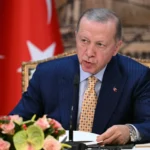The 20th Chinese Communist Party (CCP) National Congress, held in October 2022, caught the world’s attention — not least because there was not a single woman among the Politburo’s 24 members, breaking a tradition of two decades. While the number of women in key political roles globally is steadily improving, female representation in the CCP has worsened over time.
Patriarchal norms undoubtedly contribute to Chinese women’s underrepresentation in political leadership, but this is not a situation that Chinese women alone face. In many societies, women pursuing a career in politics are challenging their traditional gender roles. Hence they are often seen as lacking the necessary credentials or criticised for not being ‘real’ women. There are several factors that have made the absence of women so severe in Chinese politics.
The CCP’s commitment to women’s emancipation is reflected in Mao Zedong’s famous claim that ‘women hold up half the sky’. But this commitment has overlooked women’s political rights. The party-state’s policies addressing gender inequality have largely focused on promoting women’s economic roles. Women are effectively seen as a reserve labour force that contributes to the greater cause of nation-building and economic development. But when the CCP’s economic needs come into conflict with the goal of full female employment, women’s equality takes second place.
The 1954 Constitution of the People’s Republic of China was written with the provision that women should enjoy equal political rights to men, but concrete measures to improve Chinese women’s political status are still lacking. It was not until 1982 that the Constitution of the Communist Party of China was amended to include a vague statement that ‘the Party attaches great importance to the training and promotion of female officials’ — which remains the only mention of women’s political rights within the entire document outlining the missions and goals of the CCP.
One important measure to increase the number of Chinese women in political leadership would be to introduce an effective gender quota system. The National People’s Congress (NPC), China’s legislative body and highest state organ, is the only national-level political institution that has adopted some form of gender quota. But the system is ambiguous as from 1988, the NPC has only provided that the proportion of female delegates within each term ‘should not be lower’ than the last.
While this provision has enabled the NPC to claim that a record number of women are serving as delegates each term, women only make up 26.54 per cent of China’s congress. No other institution of political power — the CCP Central Committee, the State Council or the Chinese People’s Political Consultative Conference — have adopted gender quotas.
At the provincial and prefecture levels, the CCP Central Committee suggested in 2001 that CCP Committees, governments, People’s Congresses and People’s Political Consultative Conferences ‘should each have at least one female cadre in its leadership’. But in practice, this minimal gender quota is often interpreted very literally, with most jurisdictions only having one female cadre.
Apart from the lack of quotas, the party-state’s elite recruitment criteria also hinder women from progressing up the power hierarchy. Research shows that both male and female political leaders in China are appointed on the basis of age, education, CCP membership and experience. These leaders usually rise to provincial leadership in their early 50s. But the expected role of women as child bearers and rearers delays their entrance into the power race. And as women are required to retire five years earlier than their male colleagues, they are less likely to be considered for promotions.
In terms of educational attainment, nearly all provincial leaders, regardless of gender, have studied at university, with more than 80 per cent holding a master’s or a doctorate degree. The CCP’s emphasis on higher education further disadvantages women, as Chinese girls have less access to education. Though the gender gap in education has been closing in recent years, the impact of lifting of the one-child policy on women’s educational opportunities is still to be seen.
The overwhelming majority of China’s political leaders are members of the CCP, but the Party itself is a ‘boys club’, with more than 70 per cent of its members being men. Women’s underrepresentation in the CCP further undermines their chances of advancement. And while ministries and state-owned enterprises are talent pools for the selection of political elites, women’s lack of access to leadership posts in these sectors further reduces their opportunities to be considered for positions of power.
It is long past time for the CCP to live up to Mao Zedong’s rhetoric on women’s empowerment. Introducing an effective gender quota system, addressing barriers such as recruitment criteria and educational disparities, diversifying the CCP and providing more opportunities for women in leadership positions are crucial steps towards increasing female representation in Chinese politics.
Source : EastAsiaForum















